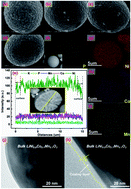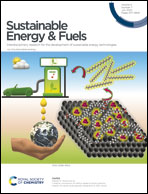Potassium phosphate monobasic induced decoration from the surface into the bulk lattice for Ni-rich cathode materials with enhanced cell performance†
Abstract
The interfacial instability and intrinsic structural degradation of cathodes, which cause performance loss and even a safety hazard, are a critical challenge in Ni-rich cathodes during long-term cycling. Herein, potassium phosphate monobasic modified LiNi0.8Co0.1Mn0.1O2, whereby a Li3PO4 coating layer coupled with trace-levels of co-doped K+ and PO43− are synchronously constructed, was successfully synthesized via a one-step calcination process at high temperature. Impressively, the optimized 2@KP-NCM delivered superior electrochemical performance, particularly at high rate and elevated temperature. High capacity retention rates of 90.6% at a 5C-rate at room temperature after 200 cycles and 92% at a 1C-rate at 55 °C after 100 cycles in the voltage range of 3.0–4.4 V were reached, and these are clearly higher than those of the pristine cathode (only 73.4% and 51%, respectively). Such a great improvement on the cycling stability is mainly attributed to the pillaring effect of doped-ions on stabilizing the layered structure and suppressing the deleterious irreversible phase-transition as well as the interfacial protective layer effectively protecting the active core cathode from the chemical attack of side products.



 Please wait while we load your content...
Please wait while we load your content...